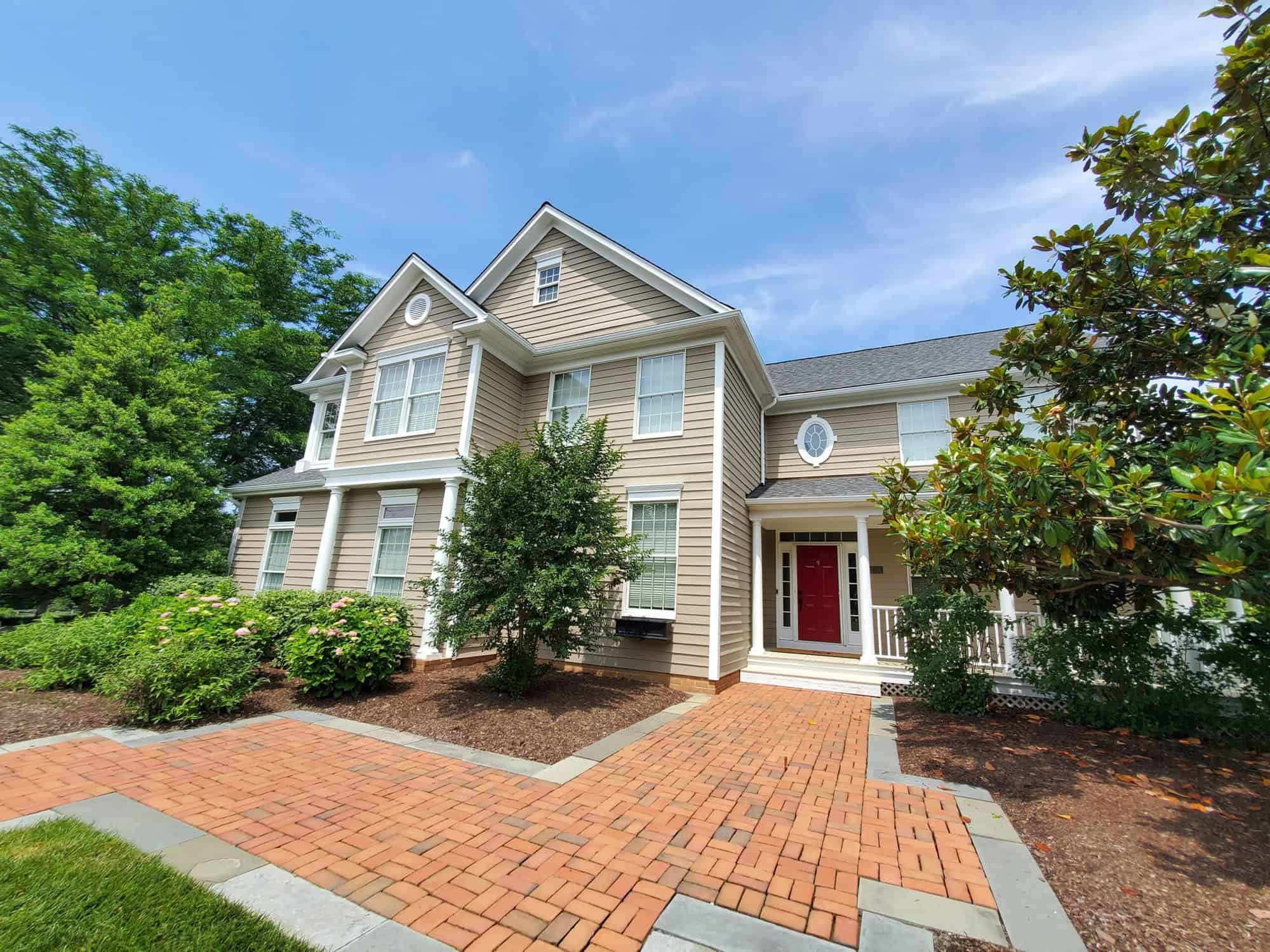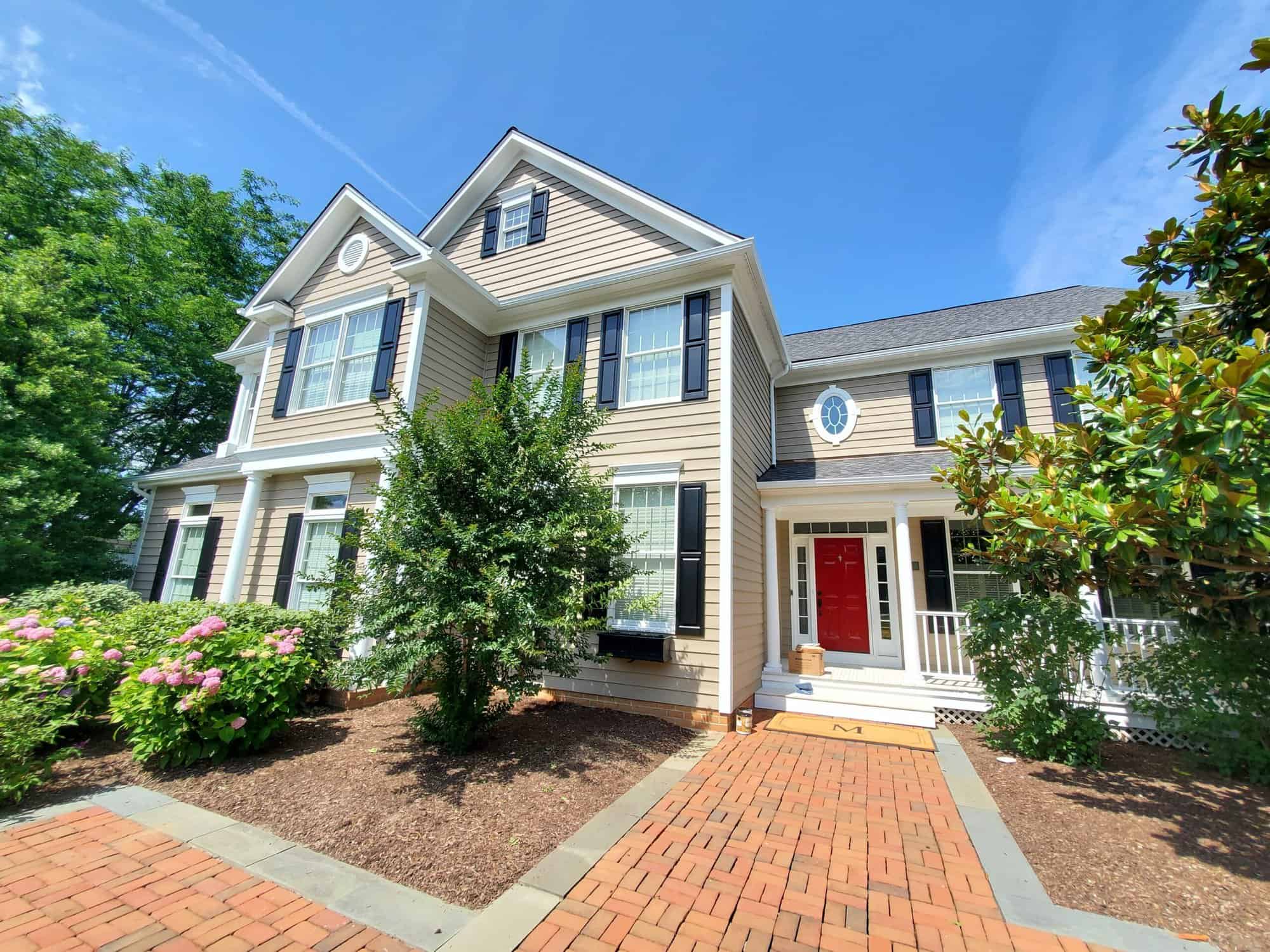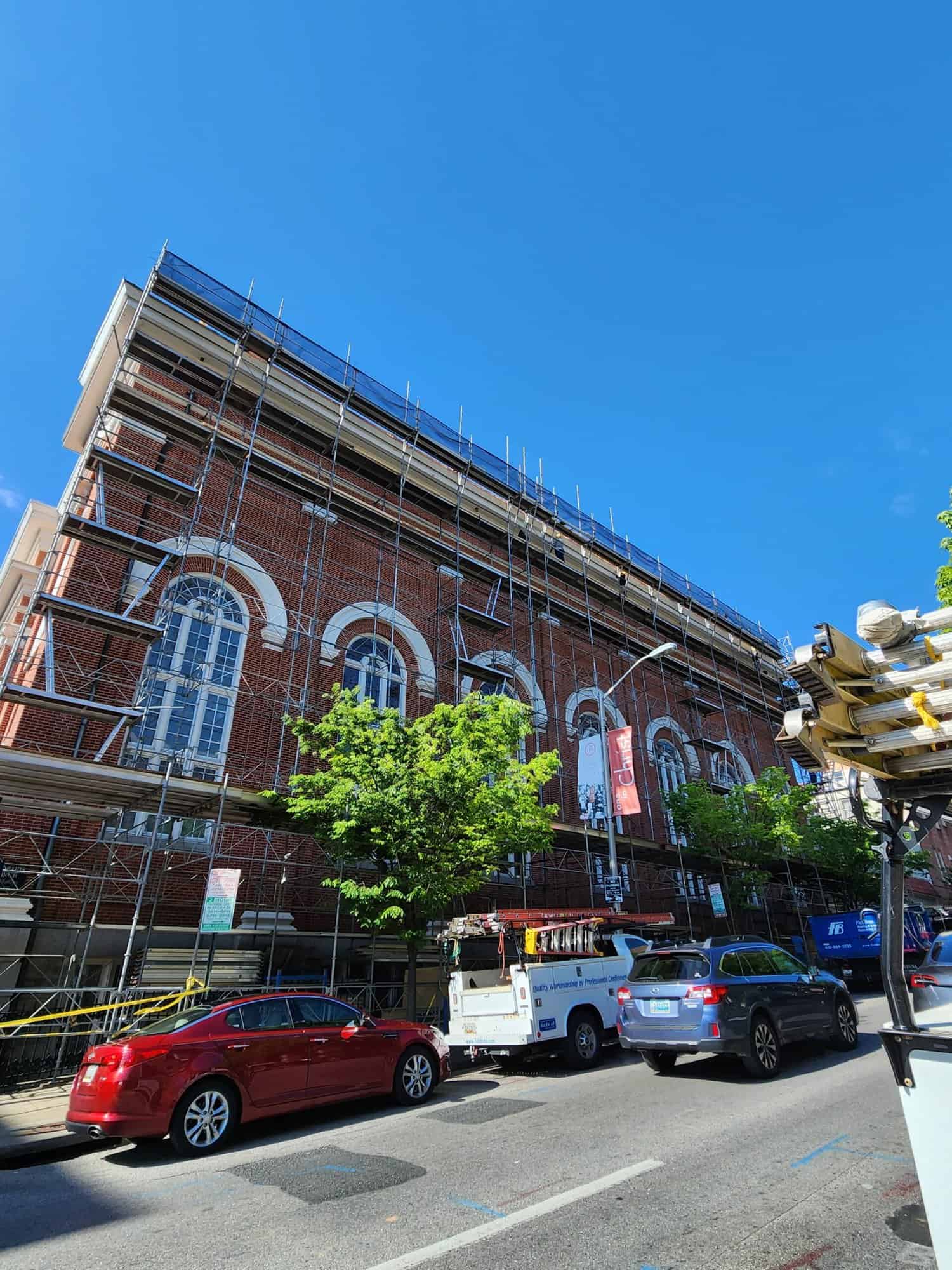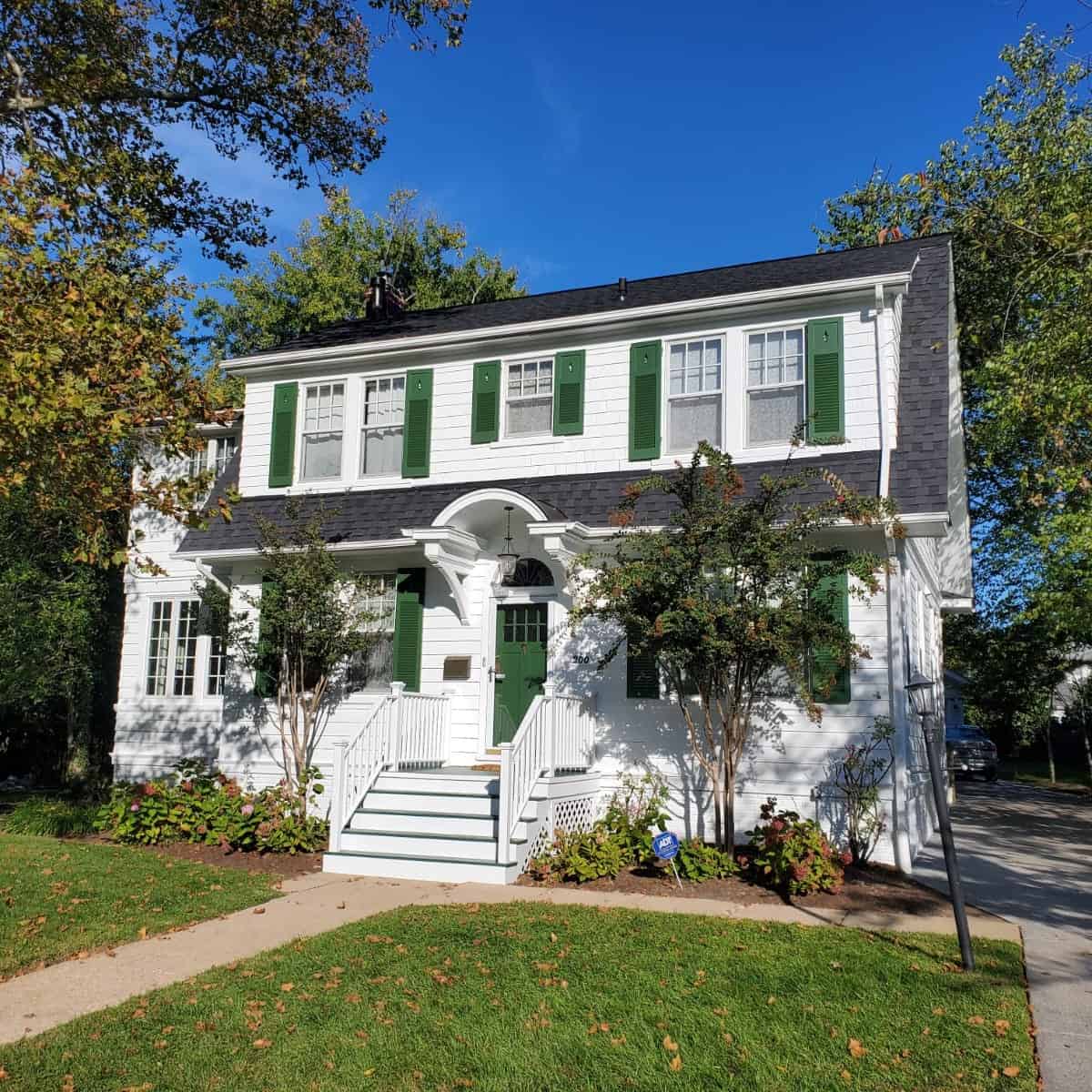If you’re thinking about painting your home exterior in Sparks Glencoe, MD, there’s more to it than picking the perfect color. Timing is everything—and I’m not just talking about your schedule. The weather outside can make or break the results.
You might be surprised how often we hear, “It looked great at first, but now it’s already peeling,” or “Why is the paint bubbling on the siding?”
Nine times out of ten, it comes down to the conditions during the project. Even the best exterior painters in Sparks Glencoe, MD can’t fight nature if the deck, wall, or trim was painted during the wrong weather window.
From surprise rainstorms to heat waves and even coastal wind gusts, there are a handful of weather scenarios you’ll want to sidestep if you want that fresh coat to stick around.
Let’s walk through the top conditions to avoid, how they affect your results, and how to plan smarter for an exterior paint project that lasts.
Key Takeaways:
- Avoid painting your home exterior in temps below 50°F to prevent poor drying and adhesion.
- High humidity or wet surfaces can cause paint to peel, blister, or dry unevenly.
- Painting in direct sun or during heat waves can lead to cracking and uneven coverage.
- Wind can blow dust and debris into fresh paint and make spray painting a mess.
- Always check for rain or storm warnings—paint needs 24 hours to cure before getting wet.

Cold Snaps: Just Say No
We get it—you’re eager to get started. But if temps dip below 50°F, it’s better to wait. Cold weather affects paint adhesion and drying time. Even paints labeled “low-temp” can struggle when the air or surface is too chilly. In our area, that’s a real factor in early spring and late fall.
Latex paint especially doesn’t behave well in cold weather. It dries slowly, attracts dust and debris, and ends up looking blotchy. If you’re using a brush or paint sprayer in cold temps, expect extra streaks, more dust clinging to the surface, and potentially uneven coverage.
If you’re wondering how to prep before temps get too cold, check out our guide to preparation to paint exterior for step-by-step tips.
Wet Surfaces + High Humidity = Paint Problems
Rain, fog, or even heavy dew? That’s a no-go for painting. A damp surface can keep the paint from bonding correctly, causing it to peel and flake faster than it should. High humidity traps moisture under the coat, and it doesn’t matter whether you’re working on stucco, vinyl siding, or wood—humidity is a silent deal-breaker.
Humidity can also affect drying time and paint sheen. You may start with a clean coat and end up with streaks or patches due to trapped moisture. It’s one of the reasons experienced exterior painters in Sparks Glencoe, MD avoid scheduling during or right after rainy days.
This is especially true during atlantic hurricane season or when your local weather radar is showing heavy moisture in the forecast. If you’re pressure washing as part of your prep, let the surface dry for at least 48 hours before painting. Trust me—don’t rush it.
Too Much Sun and Heat? Not a Great Combo
Warm days are usually good for painting your home exterior, but too warm can lead to fast-drying disasters. Paint that dries too quickly won’t have time to level out properly, which means brush marks, roller lines, or even cracking.
If you’re using spray painting tools or a paintbrush, you might notice the coat drying before you can finish a section. That uneven drying creates weak spots that won’t last through a single thunderstorm, let alone a full Maryland winter storm warning.
If your project falls during a heat wave, schedule your painting for early morning or later afternoon. Avoid direct sunlight, especially on metal, siding, or masonry surfaces that heat up quickly.
Windy Weather: A Total Mess
Painting your home exterior during a breezy day might sound nice—until you’re covered in dust, sand, or pollen. Wind can dry paint too quickly, but it also throws particles onto your wet surface. And if you’re up on a ladder? That’s not just frustrating, it’s dangerous.
Windy conditions also make spray painting almost impossible. You’ll waste paint, create overspray, and end up with uneven patches on your windows, roof, or even your neighbor’s fence.
If your neighborhood is under a severe thunderstorm watch or you see strong gusts on the storm tracker, hold off.
Rain Within 24 Hours? Don’t Risk It
Even if the surface looks dry and the skies are clear, if rain is on the way within the next 24 hours, press pause. Once again, moisture is paint’s worst enemy.
Rain can cause paint to run or blister. It’s also a problem for surfaces like wood, stucco, and masonry, which may hold hidden moisture that compromises adhesion. And it’s not just rain—tropical storm warnings, flood conditions, or even excessive dew during coastal flood advisories can make your home exterior more absorbent than you’d expect.
If you want your finish to last longer, you’ll also want to read through our how to make exterior paint last longer blog for more pro tips.
Storm Season: Hurricanes, Tornado Warnings, and Hail
It’s tempting to squeeze in a painting project just before or after a big storm season. But exterior painting right before the atlantic hurricane season or pacific hurricane season comes with risks.
Flying debris, surprise hail, and pressure changes can all affect how your paint behaves. You could end up wasting money and time on a job that gets destroyed before it’s even cured.
Same goes for areas under tornado warning. Let the extreme weather pass before you plan exterior work.
Timing Is Everything When Painting Your Home Exterior
You don’t need perfect weather, but you do need the right weather. If you want your paint job to stick, avoid the conditions we’ve talked about—cold snaps, high humidity, strong wind, direct heat, and impending storms. The right prep work and patience go a long way.
If you’re wondering when to schedule your next project, we’ve got another post that might help: why spring is the best time for exterior painting.
Here’s How FR Contractors and Investors, Inc. Can Help You Get It Right
We know weather can be unpredictable, but we’ve worked through just about every curveball it can throw. When you work with professional exterior painters in Sparks Glencoe, MD, you’re not just hiring someone to slap paint on your siding—you’re getting a plan that works with the weather, not against it.
Here’s what our process looks like:
- Careful prep including sanding, pressure washing, masking, and hand scraping where needed
- Weather-appropriate primer, adhesive caulk, and mildew-resistant coatings
- Attention to moisture levels, surface condition, and timing based on local weather
- Protection of surrounding areas with plastic, drop cloths, and debris cleanup
- Daily updates and clear timelines, so you’re never in the dark
Ready to get started?
Painting your home exterior the right way starts with smart planning and skilled execution. If you’re in Sparks Glencoe, MD or nearby, FR Contractors and Investors, Inc. has your back. We proudly serve Ruxton, Towson, MD, and the surrounding areas.
Call us at 443-775-2994 for your FREE estimate today!





